Renowned for helping to popularize music and artists of the Polynesian artists, Jack de Mello’s music could also be heard on The Flintstones, Magilla Gorilla and other cartoons.
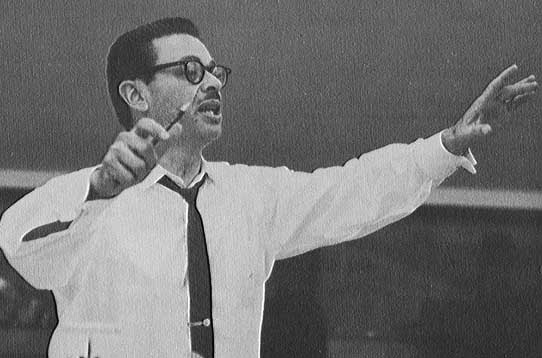
Jack de Mello Conducts
Jack de Mello lived to be 102 and was still writing music shortly before he passed away a few months ago. Though enthusiasts of Hanna-Barbera background music might naturally think of Hoyt Curtin or Ted Nichols, de Mello’s work is also instantly recognizable.
It was purely an uncredited, work-for-hire deal. According to his son Jon, getting credit was not a big deal to Jack. He simply loved what he did.
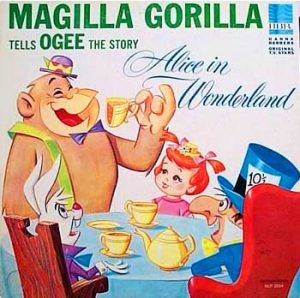 “Dad met Bill Hanna in Hawaii and they struck up a friendship,” Jon de Mello told me from their family music business in Hawaii, The Mountain Apple Company. “Bill told Dad that they needed music. He invited Dad to write some for them when he was in Hollywood.”
“Dad met Bill Hanna in Hawaii and they struck up a friendship,” Jon de Mello told me from their family music business in Hawaii, The Mountain Apple Company. “Bill told Dad that they needed music. He invited Dad to write some for them when he was in Hollywood.”
This was happening during a period of huge growth for Hanna-Barbera. Like many TV series producers, each show might generate a limited number of original music for a few episodes. Each new set of cues was then reused wherever needed. (Some of this music, when it was first used, directly matched the action the first time. For example, there is a scene in which Shaggy and Scooby get into an airplane in the first episode of Scooby-Doo, Where Are You? and a few bars of “The Marine Hymn The U.S. Air Force Song (Off We Go Into the Wild Blue Yonder)” is heard. That cue was reused constantly but of course, the reference rarely mattered again.)
A primetime series with a bigger budget might justify a score, while a short syndicated cartoon would have to rely on whatever was already in the library. The Loopy DeLoop cartoons, because they were produced for Columbia Pictures for theatrical release and had an original music budget, generated a substantial amount of cues for other H-B TV cartoons. This was also true for Hoyt Curtin’s underscore for Alice in Wonderland, a primetime special with two major corporate sponsors, Rexall and Coca-Cola. The Magilla Gorilla Show and The Peter Potamus Show, both part of a merchandising deal with Ideal Toys, must have generated cash for cues as well, because a lot of music resulted—and quite a few were de Mello compositions.
These are just a few random cues heard countless times on Hanna-Barbera cartoons and records:
Some of these cues resurfaced in Tex Avery’s “Dino and Cavemouse” segments for The Flintstone Comedy Show in 1980:
Jon was very close to his father and spent a lot of time with him, learning the art and business of music. He recalls Jack working out of both the Chaplin/LaBrea and Cahuenga locations of Hanna-Barbera, while the company was in the midst of transition.
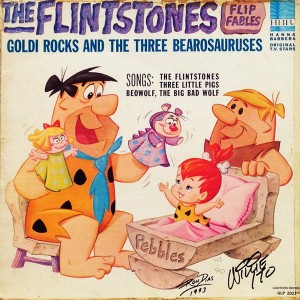 He has fond childhood memories of watching Hanna-Barbera cartoons with his dad. “He was incredibly prolific. He could be carrying on a conversation with you and still continue to write down notes. And he could write any kind of music. But I knew his music so well, I usually could pick it out,” he said. “So when we would watch something like Ricochet Rabbit, I would point to the screen and say, ‘That is your music playing now, isn’t it, Dad?’ and he would nod.”
He has fond childhood memories of watching Hanna-Barbera cartoons with his dad. “He was incredibly prolific. He could be carrying on a conversation with you and still continue to write down notes. And he could write any kind of music. But I knew his music so well, I usually could pick it out,” he said. “So when we would watch something like Ricochet Rabbit, I would point to the screen and say, ‘That is your music playing now, isn’t it, Dad?’ and he would nod.”
Jack de Mello’s Hanna-Barbera work earned him another animation assignment in the ‘90s for FirstCom Music in Texas. The result was Comedy Cartoon Collectibles, another collection of cartoon cues, this time electronic, again used countless times since their debut. Amazon currently offers the album for download.
Jack’s most personal and best recognized musical achievements lie deep in the islands and the people who live there, past and present. He didn’t just “dabble” in the music and culture. He made them his life and home, not long after he was playing in the Royal Hawaiian Hotel with a big band in the late 1940s.
In addition to concerts, Jack developed and promoted artists of Polynesia. He recorded over 160 albums, in Hollywood and Europe (on RCA, Reprise and other major labels), as well as from his company in Hawaii. With these albums, he proved that Hawaiian music has a remarkably different range of capabilities in its adaptability to sounds and styles. A de Mello album might combine authentic chants and rhythmic dances with lushly orchestrated John Williams-like crescendos, or even a groovy pop sound. Here is a very brief example of this eclectic range:
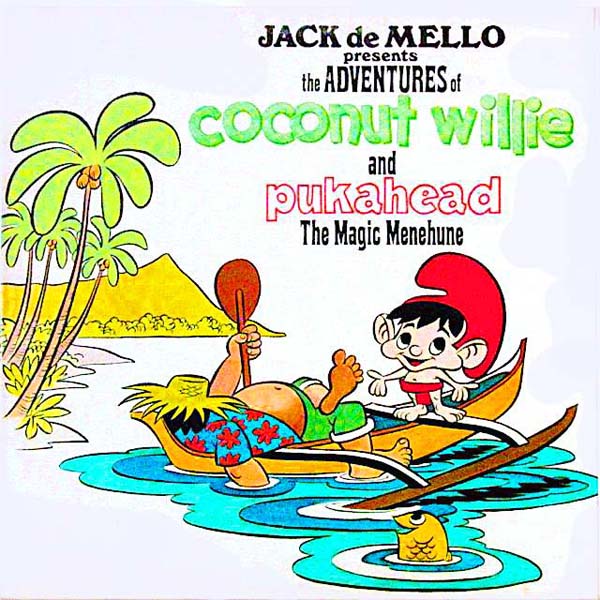
This children’s album offered the best of both worlds—animation and Hawaii.
THE ADVENTURES OF COCONUT WILLIE AND PUKAHEAD – The Magic Menehune
Royal Hawaiian Records – Hawaii’s Golden Heritage Series (Library of Congress Catalog Number #98701112 ) (12” 33 1/3 RPM / Mono)
Released in 1972. Producer/Composer: Jack de Mello. Running Time: 39 minutes.
Stories: “Mrs. Oyster Rockerfeller’s Missing Pearls,” “The Mysterious Mystery Of The Missing Ice Cubes,” “ “The Huffing Puffing Story Of Mr. Blalah Blowfish,” “Penny Centipede’s Missing Shoes,” “The Story Of Goldie The Fish,” “The Spooky Kooky Hawaiian Raindrops.”
Song: “Coconut Willie” by Jack de Mello & Bob Magoon.
This little-known album collects six whimsical tales inspired by Polynesian lore and tradition, set to the underscore of Jack de Mello animation cues.
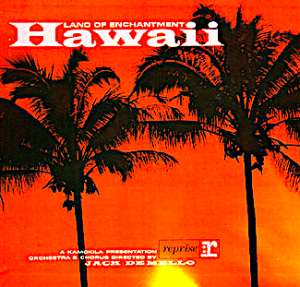 Pukahead is a “Menehune,” like a leprechaun crossed with a Smurf. These little beings can build astonishing structures, use magic in positive ways and often work at night or undercover (like the elves who helped the shoemaker). (More about the Menehune legends here.)
Pukahead is a “Menehune,” like a leprechaun crossed with a Smurf. These little beings can build astonishing structures, use magic in positive ways and often work at night or undercover (like the elves who helped the shoemaker). (More about the Menehune legends here.)
On the album, Pukahead solves mysteries and assists various people and creatures on land and sea. It sounds as if it would have made a fine cartoon, and maybe that was the intent behind the album. Longtime Walt Disney World character dining patrons might remember that the name was used for the “Minnie’s Menehune Breakfast” at Disney’s Polynesian Resort for decades before Lilo and Stitch inspired the current “’Ohana” breakfast.
Coconut Willie is a plump, laid-back fellow who was the subject of a popular hula song co-written by de Mello. It was popularized by beloved island entertainer “Aunty” Genoa Keawe, who performed it on concert until shortly before her passing in 2008 at the age of 89. Her recording of Coconut Willie can be heard here.
“The Adventures of Coconut Willie and Pukahead The Magic Menehune”
From the way the music is edited–not only under the story but often allowed to play on its own—it seems that de Mello wished to showcase the delightful cues, justifiably. The narrator might be either Vic Perrin or Bob Holt; though it is not verifiable at this writing.


 GREG EHRBAR is a freelance writer/producer for television, advertising, books, theme parks and stage. Greg has worked on content for such studios as Disney, Warner and Universal, with some of Hollywood’s biggest stars. His numerous books include Mouse Tracks: The Story of Walt Disney Records (with Tim Hollis). Visit
GREG EHRBAR is a freelance writer/producer for television, advertising, books, theme parks and stage. Greg has worked on content for such studios as Disney, Warner and Universal, with some of Hollywood’s biggest stars. His numerous books include Mouse Tracks: The Story of Walt Disney Records (with Tim Hollis). Visit 





















































This is a great article. You know something, when listening to this, I noticed that the voice of coconut willy sounds very familiar. I think his was the voice that was also used to replace the voice of Charlie in the Mr. Magoo show cartoons on DVD. Am I possibly right?
It could very well be, Kevin. You have a good ear for that. Jack de Mello may have hired a Hollywood and Hawaiian cast for the voices.
Those Hanna-Barbera cues are as familiar to me as the lullabies my mother used to sing. How nice, after all these years, to find out about the man who composed them, and to hear such interesting samples of his other works.
The tune played by the muted trombone as Cavemouse is trying to make off with Dino’s food dish, and in a reprise by the orchestral tutti at the end of the cartoon, is the folk song “English Country Gardens”. It became popular about a hundred years ago thanks to several arrangements of it made by Percy Grainger. A variation of the melody, played by the tuba in a minor key, is often heard on The Flintstones when Fred is angry about something.
The tune from the “Music from the Land of the Rising Sun” album is “Sakura” (Cherry Blossoms), probably the best-known Japanese folk song there is. Quite a bombastic arrangement of it there.
“Off we go, into the wild blue yonder” is the anthem of the U.S. Air Force, not the Marines. The Marine Hymn is the one that begins: “From the halls of Montezuma to the shores of Tripoli….”
Aloha oe!
Thanks for the remininsces, the info and the correction, Paul. And to think I just watched Abbott and Costello in “Keep ‘Em Flying!” We’ll fix it.
He had a novelty hit called MARCH OF THE WAIKIKI WIGGLE WATCHERS SOCIETY.
Regards
Graham Carter.
Thanks so much for this post, Greg! Had no idea about this fellow’s existence ’till now. Nice to know his name, even if he didn’t get credited for his fine underscores. I’m particularly fond of that one “Magilla” chase track you included in your video with the banjo and fiddle. Probably one of my favorite H-B underscore cues, period.
Thanks for introducing all of us to Jack De Mello and going over and beyond by contacting his son for memories as well. I appreciated the clip of De Mello’s Hanna-Barbera cues because I never knew he was responsible for those familiar bits. Of course, I know of Hoyt Curtin and how underrated he is but obviously De Mello is even more underrated when it comes to the history of H-B.. It’s nice to know he had so much fun composing this stuff. As Henry Ford once said, “There are no limits to what a man can accomplish….as long as he doesn’t care who gets credit.”
That probably didn’t faze Bill and Joe. They’d probably think back to those Oscars their Tom and Jerry cartoons won that Fred Quimby accepted.